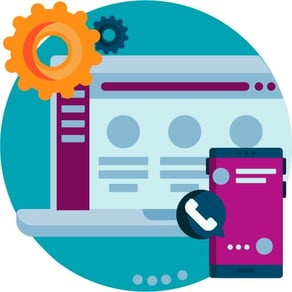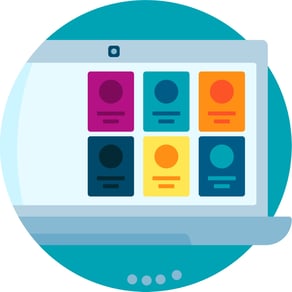The modern workplace isn’t perfect.
In terms of capability it’s come on leaps and bounds, but as software sophistication grows the ones who are actually in front of the screen are facing one critical issue - The tools they are given were designed and implemented without their input. Because of course they were, we don’t currently live in a world where vendors, developers and IT teams can get one-on-one time with every person using their software. Even if we did, no one person’s needs are ever going to be the same as another’s.
The solution to this issue isn't more training or better change management or even better technology, it's recognizing that people fundamentally work better with tools that are customized to their own needs, that they do better when you give them the power to enact change.
Customization on an individual level isn’t a revolutionary theory, but it often remains revolutionary in practice. Most organizations are happy to continue deploying one-size-fits-all solutions because they see it as the simpler option, choosing to remain unaware of the invisible costs. But by making a person get used to something that doesn’t work for them, businesses are costing themselves time, money, goodwill and even good people to competitors.

The cumulative cost of small frictions
An extra click or two here, a scroll there, pausing to find a piece of data because its placed counter-intuitively, all multiplied across each day, then again for each month and again for each year – it adds up. And when these micro-frictions exist, most of the time people aren’t improving themselves to speed up processes, they simply get used to doing everything just a little bit slower.
Each and every second spent navigating an unsuitable interface, each moment of confusion about where to find a function - these accumulate into hours of lost productivity per person, per day. But here’s the good news - even the smallest changes can make a big difference when they are super tailored to individual needs.
The importance of empowering the individual
This brings us back to our original problem. There just isn’t enough time in the day or resource available to tweak a solution for each and every user. Further still, developers or central IT departments cannot possibly understand the nuanced needs of every user.
We’re all different, and these differences extend far beyond obvious factors like role or department or how we’re supposed to be using a piece of software. Personal cognitive preferences, workflow patterns and innate capabilities all influence how someone interacts with a digital tool. A user who processes information visually will have different dashboard needs than someone who prefers textual summaries. A left-handed user might benefit from interface modifications that would hinder a right-handed colleague.
With so many variables spread across so many people, approaching this quandary may seem impossible, but the answer to this is quite simple – Empower individuals to make their own customizations.
Only through self-identification can the nuances that make a bad day at work into a good one be found. Users alone develop intimate knowledge of their own productivity patterns, often subconsciously, knowing which information they need to see first, which functions they use in sequence, and which visual arrangements help them process information in the most efficient way.

Trusting users to do the right thing
Allowing a user to customize the shape of their own digital workspace represents a fundamental shift from traditional IT governance models, which often prioritize control and standardization over user empowerment and efficiency. But organizations that embrace user-driven customization don't lose control, they gain insights into what their people need to be their best. When employees can modify their tools to match their needs, usage patterns become more visible, providing valuable intelligence about how work gets done versus how organizations think it gets done.
Customization and Accessibility
Personalized interface customization also plays a significant role in putting accessibility at the centre of the digital workplace. With various governments now enforcing accessibility rulings across the world, creating interfaces that cater to all accessibility needs is now largely a legal responsibility.
Because of this rapid move forwards, organizations often find themselves falling into the trap of providing accessibility features that they only think their users will need. By empowering the individual, they can remove the guesswork and deliver functionality that actually makes a difference to people with hyper-specific requirements.
Moving forward with customization
The modern workplace isn’t perfect, because a lot of businesses are building off of outdated concepts. We’re all coming round to the fact that with the rise of hybrid and fully remote work that everybody’s office-space is unique, but the digital workspace is as well. Because of this, organizations that recognize this new reality and build systems that empower individual customization will see measurable improvements in productivity, satisfaction, and retention. This doesn't mean abandoning governance or security protocols, but adding a customizable layer on top of their digital interfaces, whether they’re dashboards, portals or any other kind of UI.
The future workplace won't be defined by how well people adapt to tools, but by how well tools adapt to people. Organizations that understand this principle today will have a significant competitive advantage as we move towards the workplace of the future.
Want to learn more about how you can customize your people experience? Get in touch with us today.


